Dick King roadster: Lost, found, restored, and still in show-winning shape
We met Vince Weatherby at his San Diego County property, where many of his vehicular projects are housed. There’s a ’68 Firebird in a garage along with most of what looks like a Jaguar XK120, but the bulk of his collection is older and decidedly less curvy. Weatherby is a WWII historian and has an affinity for military vehicles, so there are flat-fender Jeeps, a Dodge command car, a Chevrolet G-506—the single-rear-axle version of the common GMC deuce-and-half truck—and, partially covered by a huge tarp, an amphibious DUKW. Despite this fascinating variety of metal, it was another piece of history in Weatherby’s care that brought us to his garage.

The Dick King roadster, as this ’29 Ford Model A came to be known, has been through several iterations. It first gained notoriety when it hit the California car show circuit in the early ‘50s. Dick King belonged to the Vallejo Rodsters car club and owned the roadster starting in the late ‘40s. King was an avid hod-rodder and racer and eventually became an engineer. One of his lasting legacies, however, is this car. Aside from its timeless cool factor, it marked a seminal moment in northern California hot-rodding and no doubt inspired many early hot-rodders to build cars in a similar vein. The generous publicity it received was a big help on that front. Blending traditional hot-rodding tactics of swapping mechanical parts with the show car methods of the era, like pirating aesthetic bits and bobs from other vehicles, puts this car into the rare territory of a race car with show-winning looks.
Early photos show it as a rough-and-tumble hot rod with a ’32 grille shell but without a hood or hood sides. In just a couple of years, the car evolved to be sleek, trim, and polished. It featured a wonderfully shaped track nose and rode on a low, race-like stance thanks to being channeled over its fully boxed 1932 Ford frame. The louvered aluminum hood and hood sides were accompanied by a belly pan that kept the airflow from mingling with the dropped floorboards. In true hot rod fashion, a flathead V-8 was mated to a ’39 Ford trans filled with Lincoln Zephyr gears that sends power to a ’40 Ford banjo rear end. It was enough to get the car a small feature in Hot Rod magazine and several mentions in show coverage from other magazines.
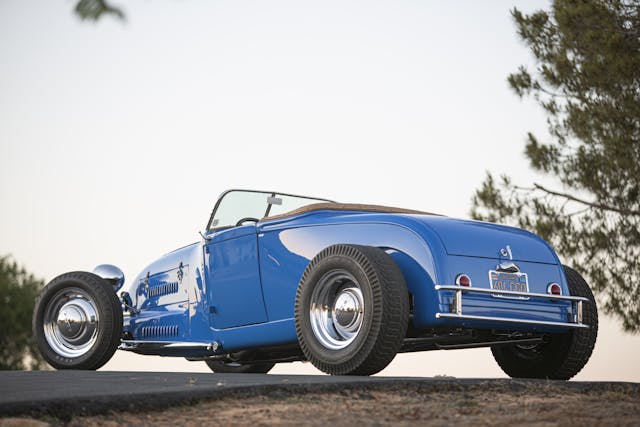
Weatherby has been doing his best to piece together the car’s history, but information is hard to come by. In its early show-going years the car was painted blue, although some photos suggest the front end was bare metal for a brief period of time. In 1951, the roadster competed at Oakland’s Grand National Roadster Show for the title of America’s Most Beautiful Roadster (AMBR) and tied for second with the Neikamp roadster, another blue, track-nosed Model A that had won the title the previous year.
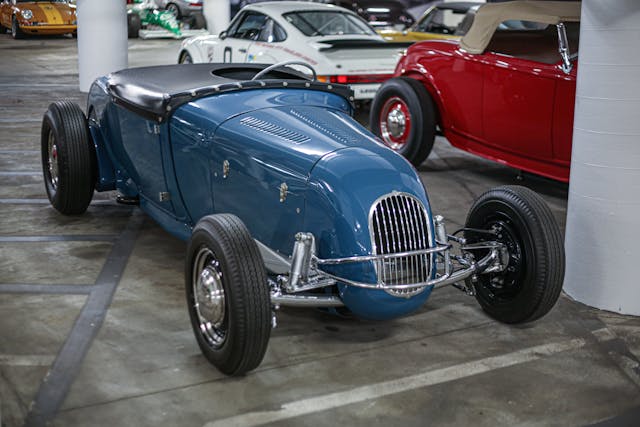
As best as Weatherby can tell, the car remained blue as long as King owned it. After that, things get murky. He does know that the car wasn’t just a show queen, as it has the timing tags to prove that it competed in the Cal-Neva Roadster Association’s flying quarter-mile trials.
It seems that the roadster had at least three owners before Weatherby’s history of the car picks back up. One of them had painted it a metallic yellow-gold that looked quite good, but time took its toll on the car and by the mid-‘80s it was a little hairy around the edges. That’s when Barry Williams, a longtime family friend of Weatherby’s, spotted it for sale at the Pomona Swap Meet in the mid-’80s. Dick King’s original vision for the car was still mostly intact, although the Ford flathead V-8 had been replaced with a Chevrolet small-block. (Not surprising, given that everything gets a small-block Chevy of one type or another given enough time.) The hand-shaped track nose had also been replaced, this time by a fiberglass piece.

Starting in 1986, Williams spent four years getting the car back to its 1951 car show glory with the help of many California shops. Bill Oliver at Trabuco Rod Works handled the suspension and chassis. Bruce Henderson did the bodywork in Costa Mesa, and Don Emory of Emory Restoration in Fallbrook, California, did the finish bodywork and paint. It’s a shade of blue that’s close to the original, although likely more vivid. The Chevy engine was yanked, and a hot-rodded flathead was once again placed between the frame rails. The nose was also returned to its show-era glory and was reshaped in aluminum.
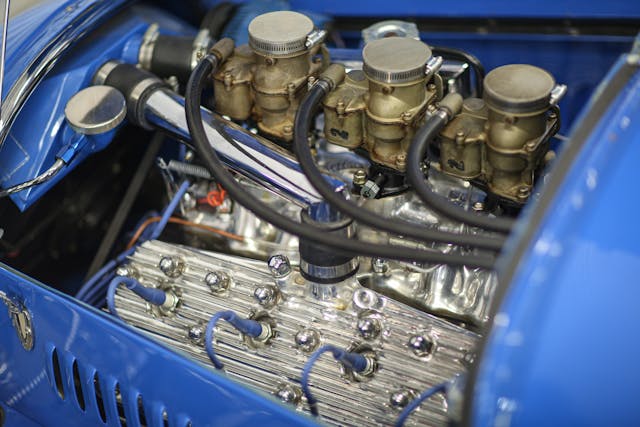
After making the rounds in its restored form and being photographed by Gray Baskerville for Rod & Custom magazine, Williams mostly kept the car on jack stands and under cover—two covers actually. Weatherby’s first sight of the car came when he curiously poked around the car and peered under its cover while Williams was focused on a task at a nearby workbench. “You’re getting a little personal, Vincent,” he admonished him. Weatherby moved on to other projects of his own but never really forgot about the car. In 2010, Williams passed away and the car was put up for sale. Weatherby was glad to carry on the car’s legacy and purchased the car from Williams’ estate.
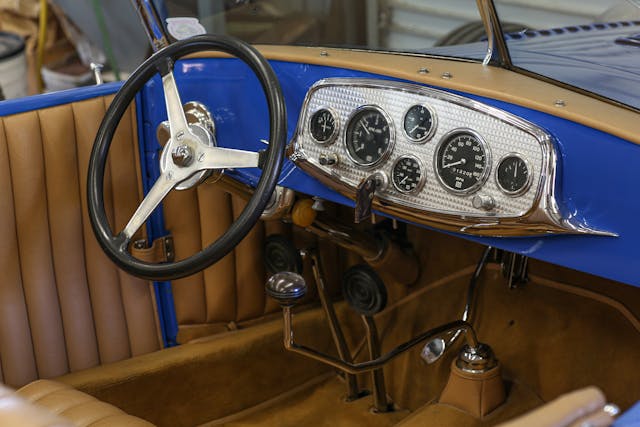
In the 10 years he’s owned it, Weatherby has taken it to several shows and it made another appearance at the Grand National Roadster Show, which is now held in Pomona. Jay Dean of Nostalgia Ranch in Bonsall, California, has been tasked with keeping the car in tip-top shape. A British ex-pat with both a fondness and a knack for hot-rodding and racing pre-war Ford bangers and flatheads, Dean races a flathead-powered 1919 Model T roadster of his own. He has encouraged Weatherby to take the car out to even more shows. “I’ve probably put more miles on it lately than Vince has,” Dean admitted. He’s also likely to have the first right of refusal if Weatherby ever decides to sell the roadster, but nobody is counting on that happening anytime soon.
Weatherby sees himself as a steward for this car, “I’m gonna drive it, but I’m gonna disappoint Jay.” he joked. “It’s still in outstanding condition. I’ve restored a lot of cars over the years. I’m not gonna use it so much that it will need to be restored again.” As the history of this car keeps unfolding, Weatherby hopes to expand his collection of vintage photos and keep the car on the road, visiting shows and preserving its history as best he can. While this iteration isn’t a totally accurate recreation of its 1951 AMBR runner-up finish, this is how the car has looked for 30 years, making its current state its longest-lived look. A look that it will likely keep for many years to come.
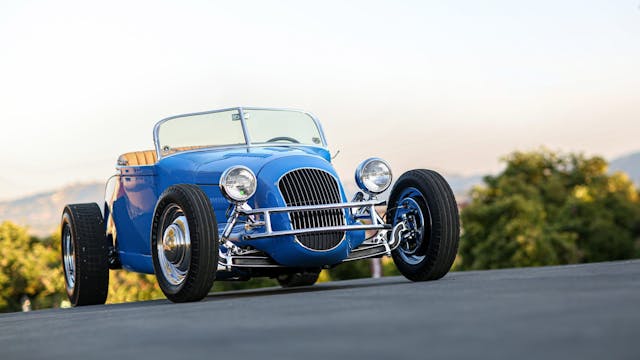
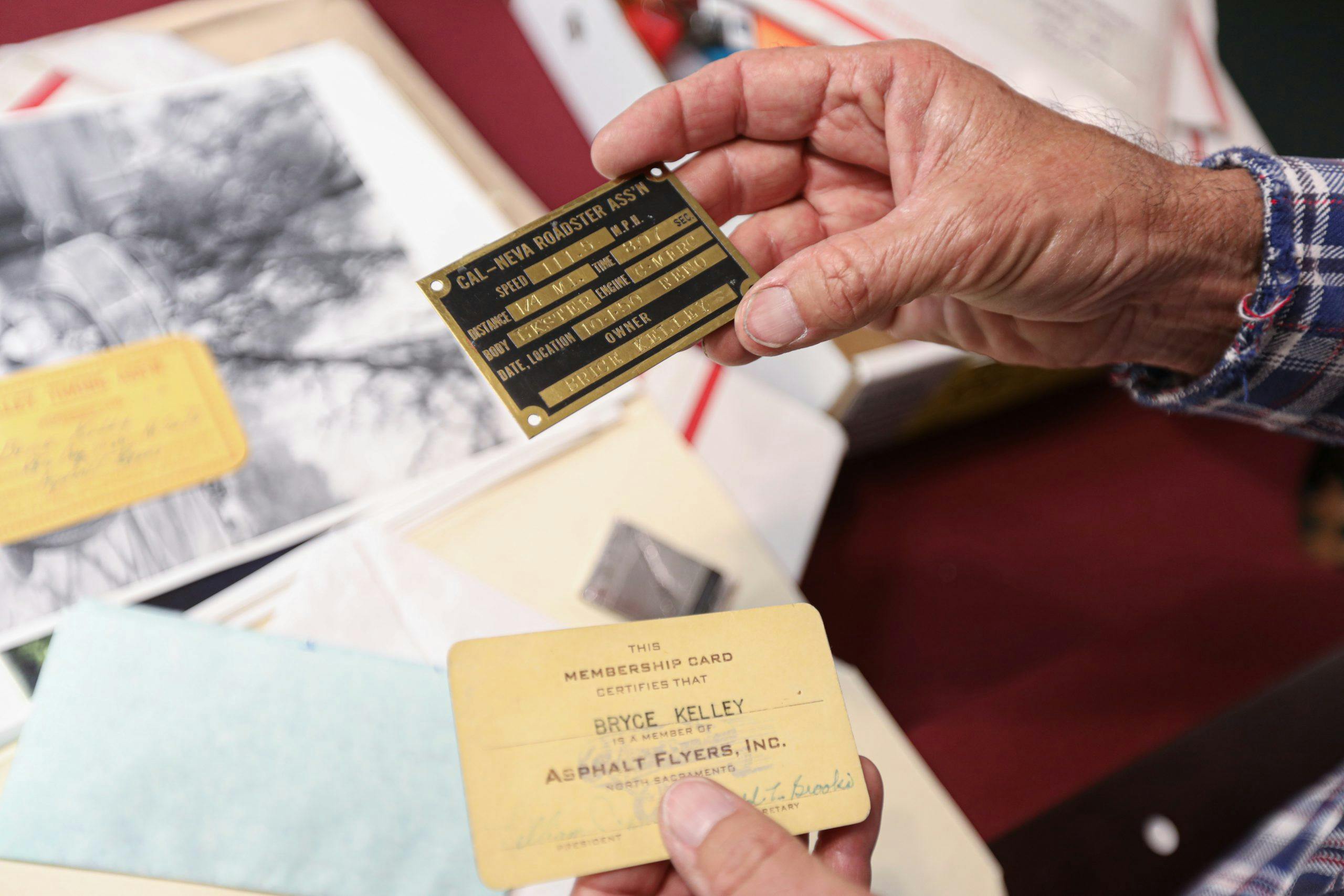
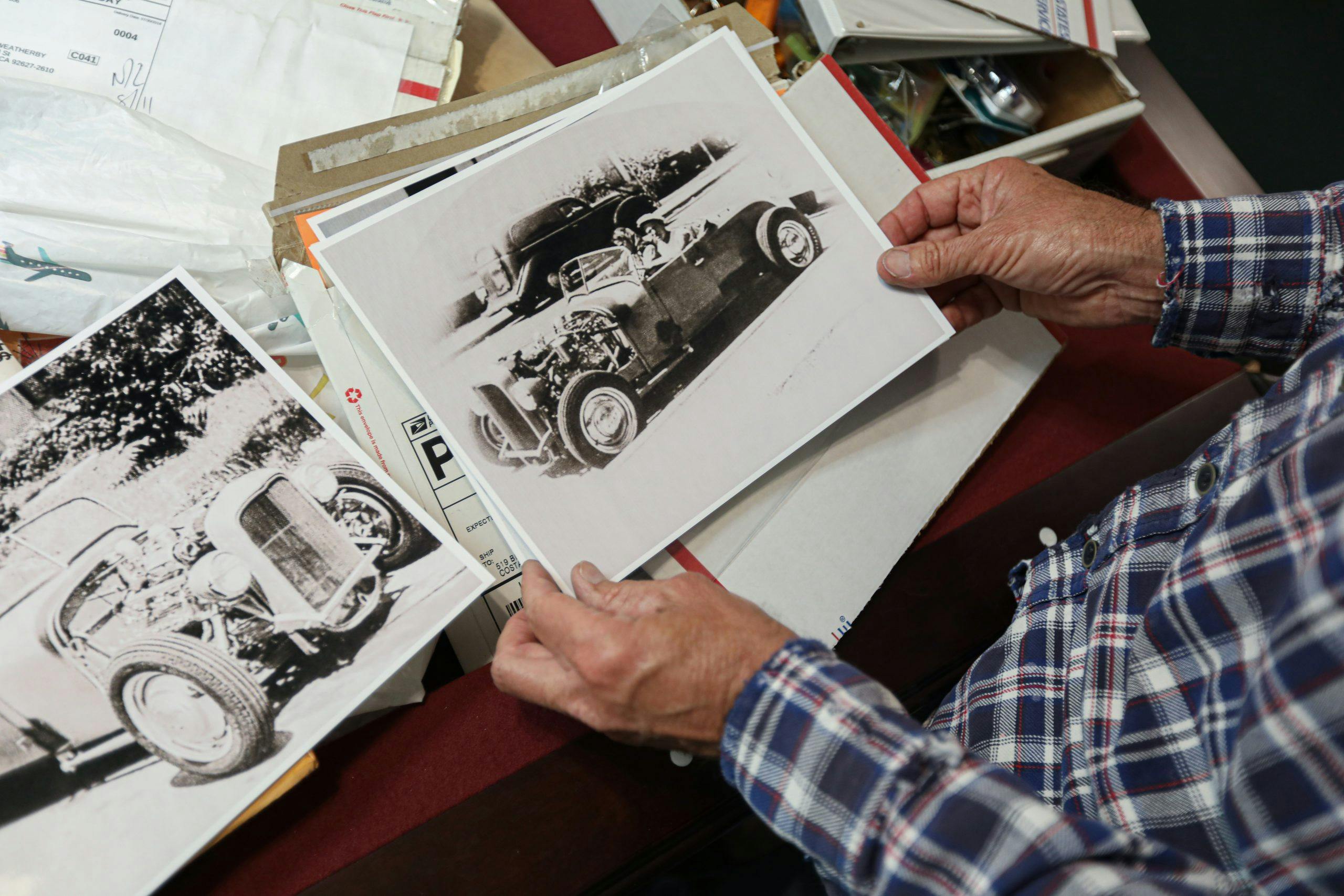
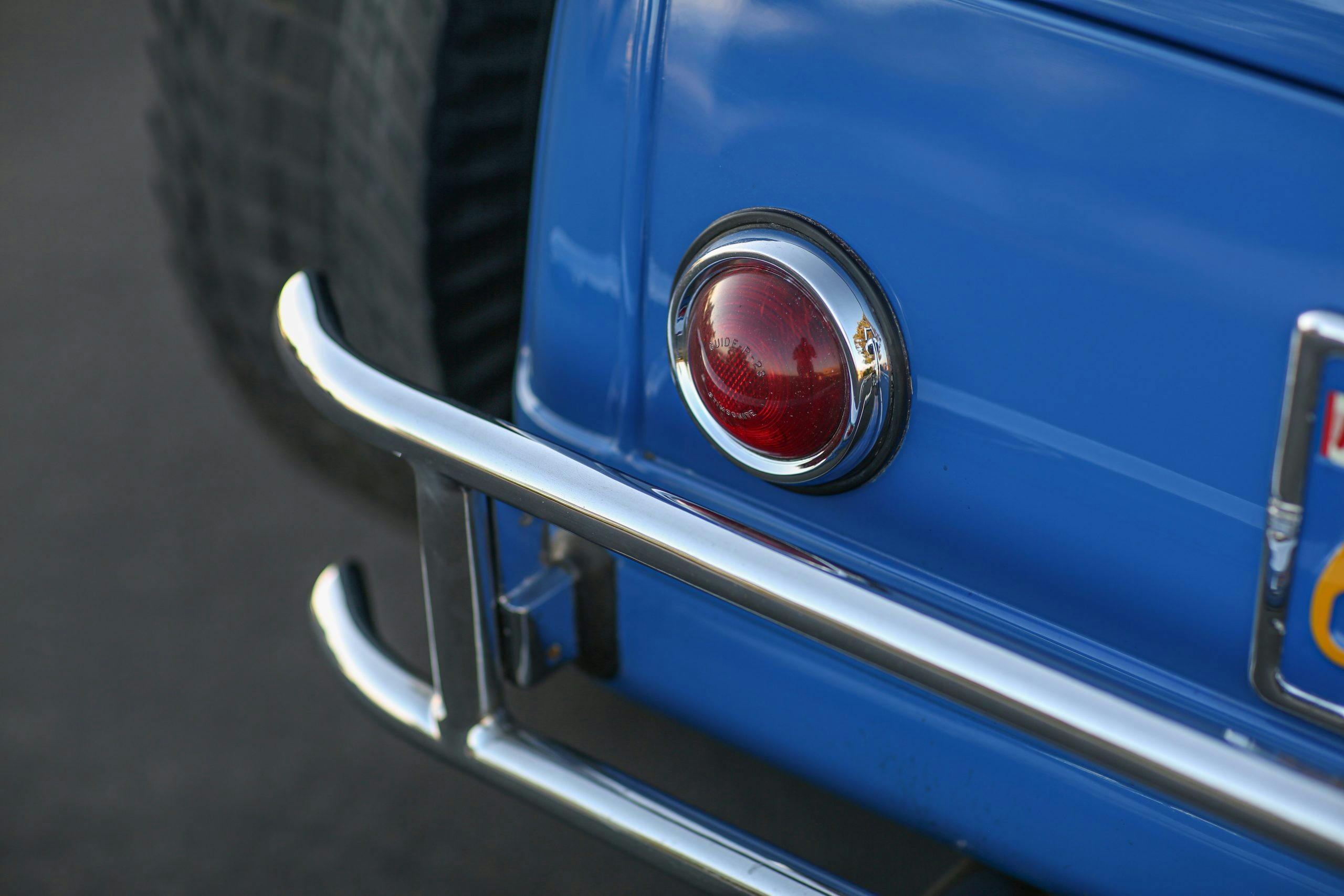
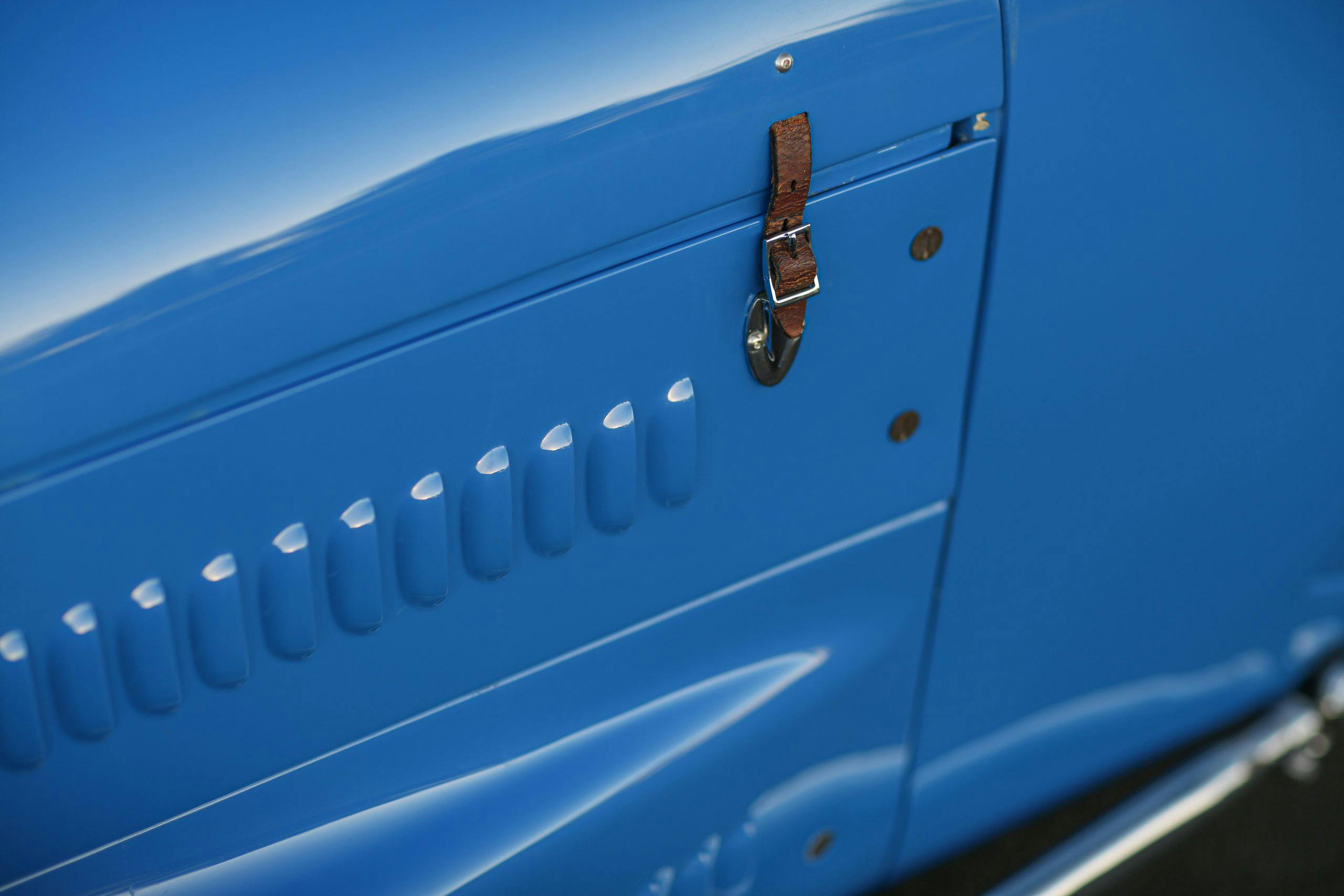
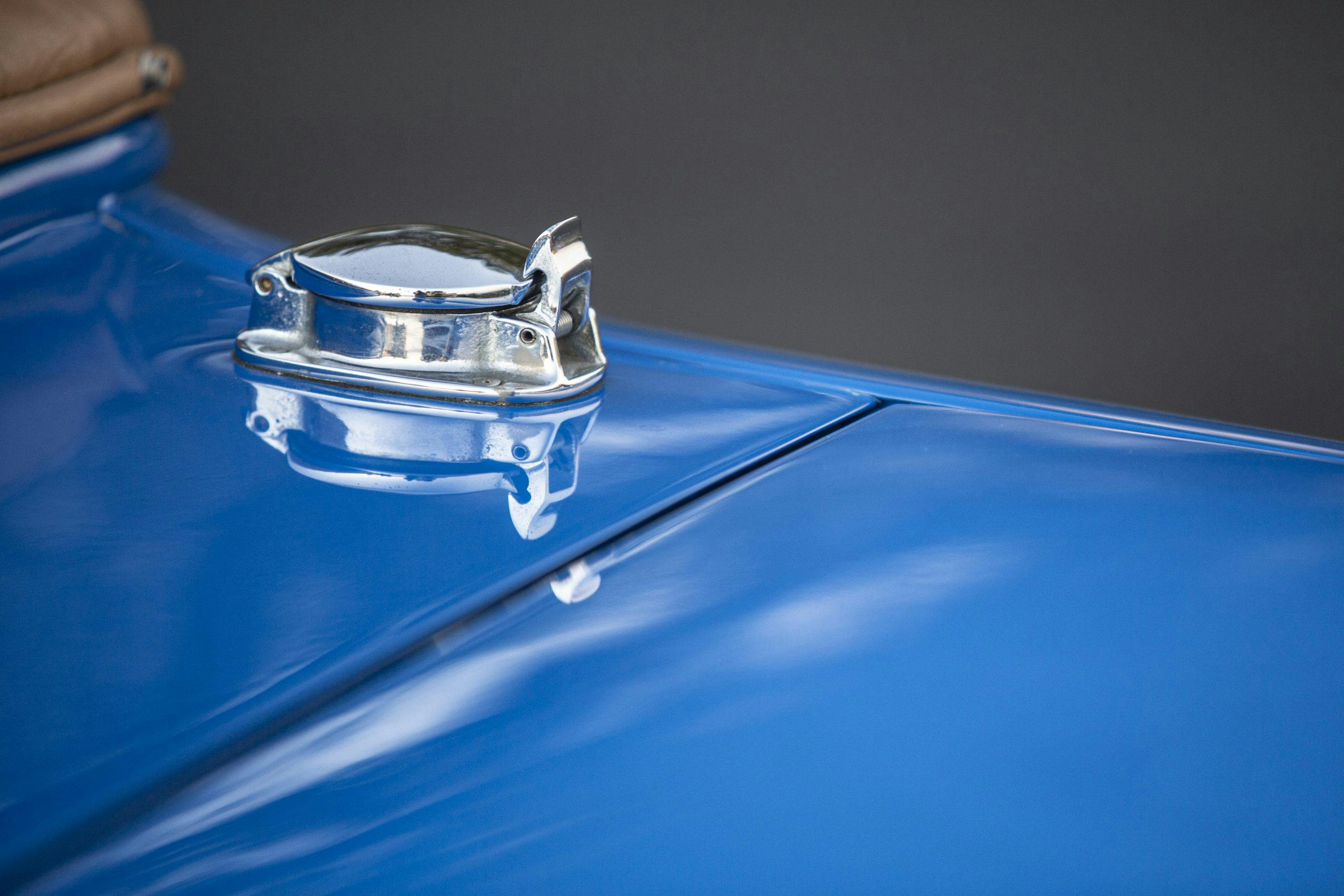
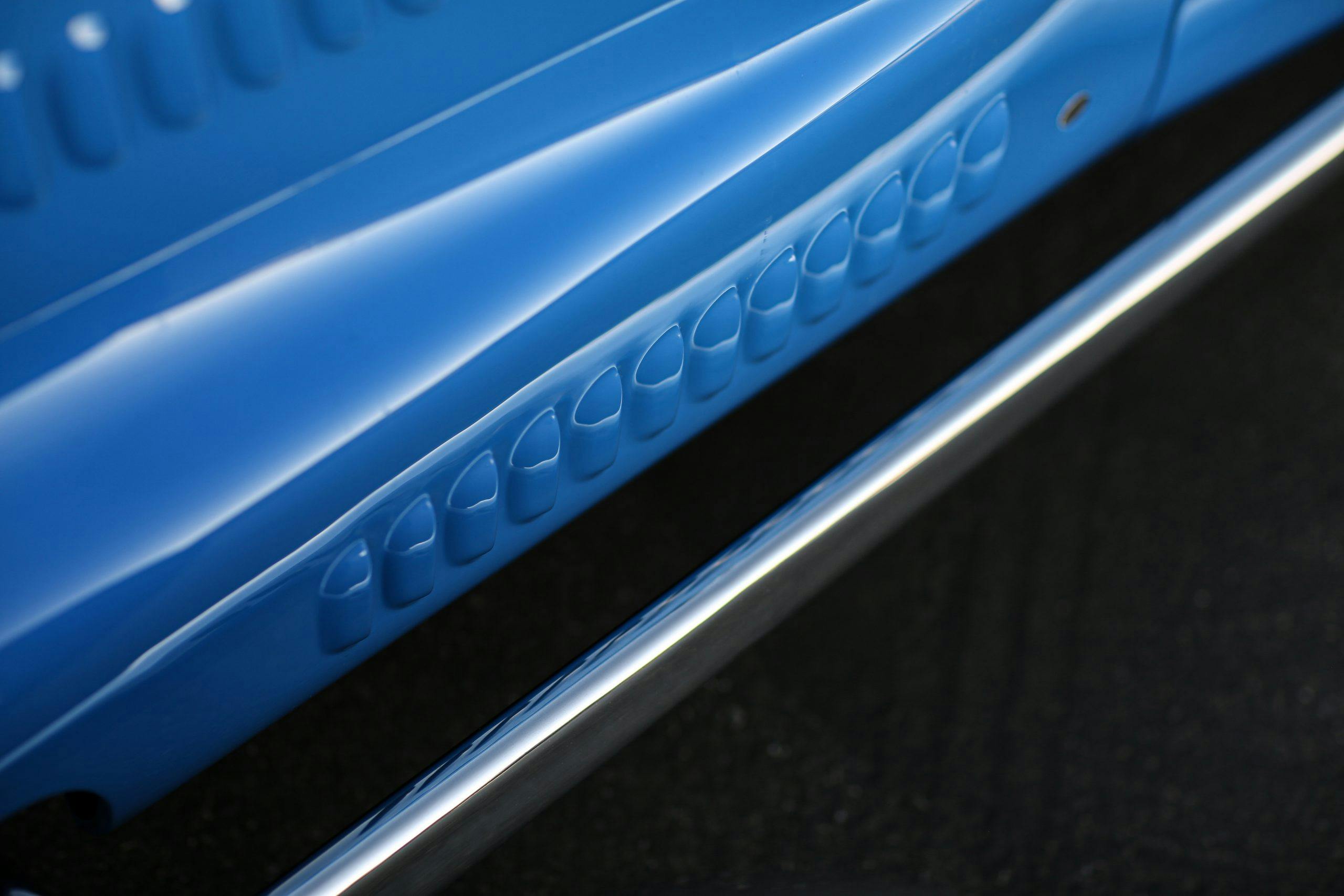

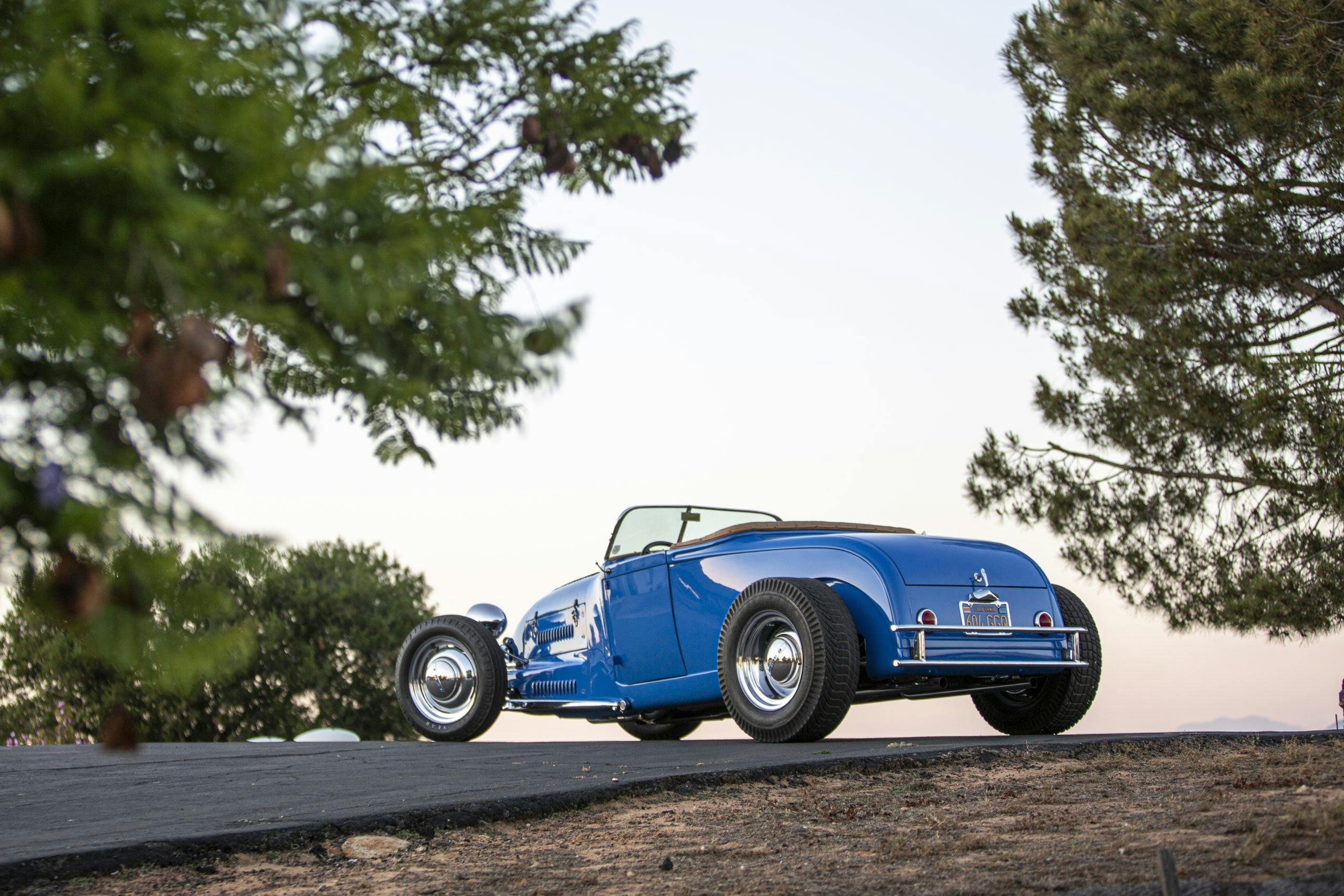
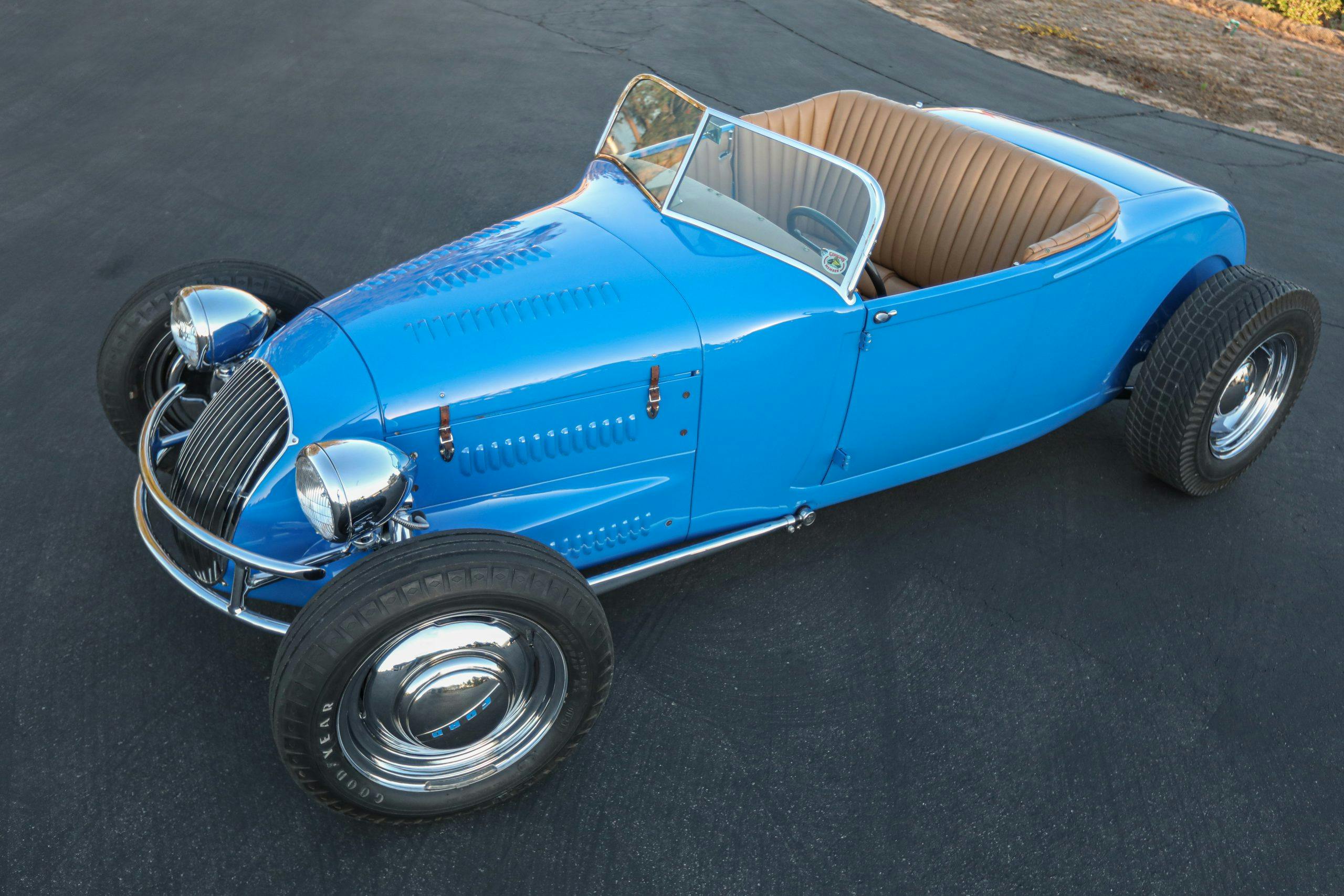



Dick King Roadster, Dick King was my uncle. He and my dad built an ran this Roadster back in the late 40’s and early 50’s. Running a dry lake bed in Nevada. I think it held a speed record in Vallejo in the early 1950’s. I believe my uncle traded the roadster for a 1955 Ford Truck that he had for over 20 years. My Dad was running the roadster on the dry lake bed in the Reno area he missed a shift and blew out 3rd gear. They had to drive all the way back to Vallejo in 2nd gear.